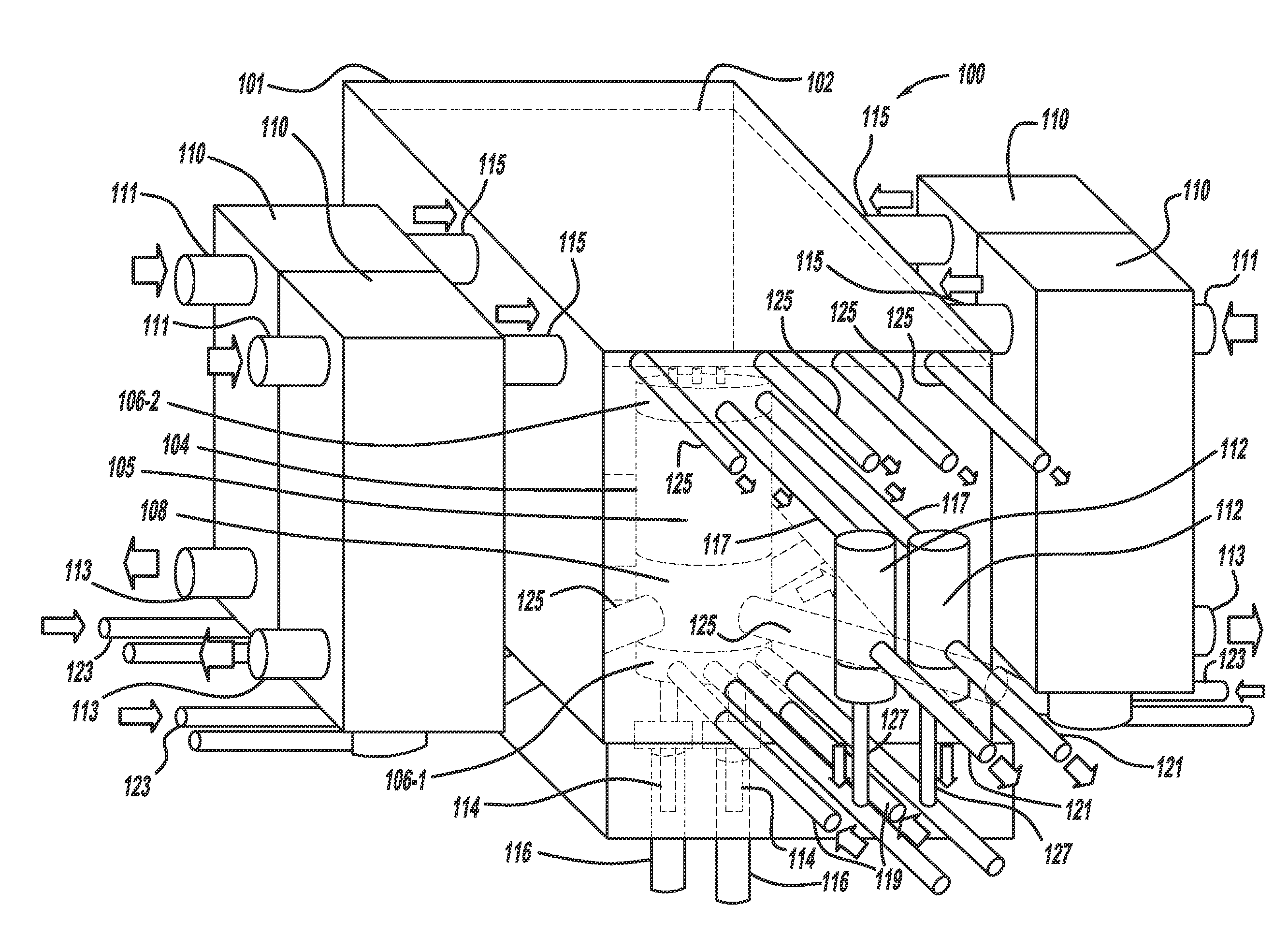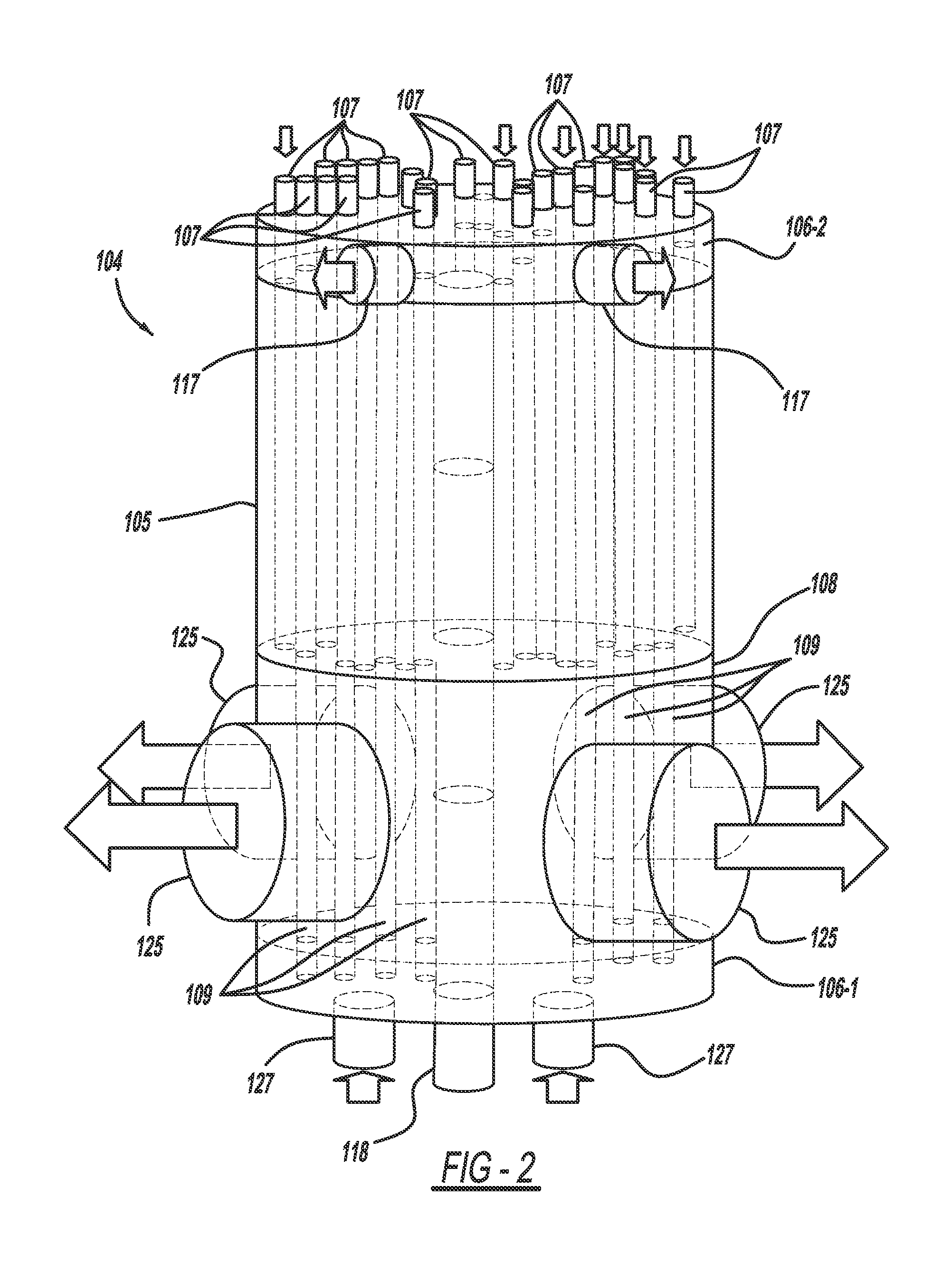Two-fluid molten-salt reactor
a molten salt reactor and flue gas technology, applied in nuclear reactors, nuclear elements, greenhouse gas reduction, etc., can solve the problems of difficult disposal of high-level waste, environmental, safety and security concerns, and the risk of nuclear weapons proliferation
- Summary
- Abstract
- Description
- Claims
- Application Information
AI Technical Summary
Benefits of technology
Problems solved by technology
Method used
Image
Examples
Embodiment Construction
[0023]The following description is merely exemplary in nature and is in no way intended to limit the present invention, its application, or uses. It should also be understood that steps within a method may be executed in different order without altering the principles of the invention.
[0024]Referring now to FIGS. 1 and 2, a two-fluid molten salt reactor embodying the principles of the present invention is illustrated therein and designated as 100 (hereinafter reactor 100). The reactor 100 includes a large fluid pool of a blanket salt 102 and a reactor vessel 104 with a reactor core 105, all which are contained in an enclosure 101. The reactor core 105 may include a moderating core and may be made of metal, graphite, carbon-carbon composite, or some other suitable substance. Reactor cores with little carbon in them would have a near-fast or epithermal neutron spectrum. Reactor cores with considerable carbon in them would have a near-thermal neutron spectrum. The pool of blanket salt ...
PUM
 Login to View More
Login to View More Abstract
Description
Claims
Application Information
 Login to View More
Login to View More - R&D
- Intellectual Property
- Life Sciences
- Materials
- Tech Scout
- Unparalleled Data Quality
- Higher Quality Content
- 60% Fewer Hallucinations
Browse by: Latest US Patents, China's latest patents, Technical Efficacy Thesaurus, Application Domain, Technology Topic, Popular Technical Reports.
© 2025 PatSnap. All rights reserved.Legal|Privacy policy|Modern Slavery Act Transparency Statement|Sitemap|About US| Contact US: help@patsnap.com



